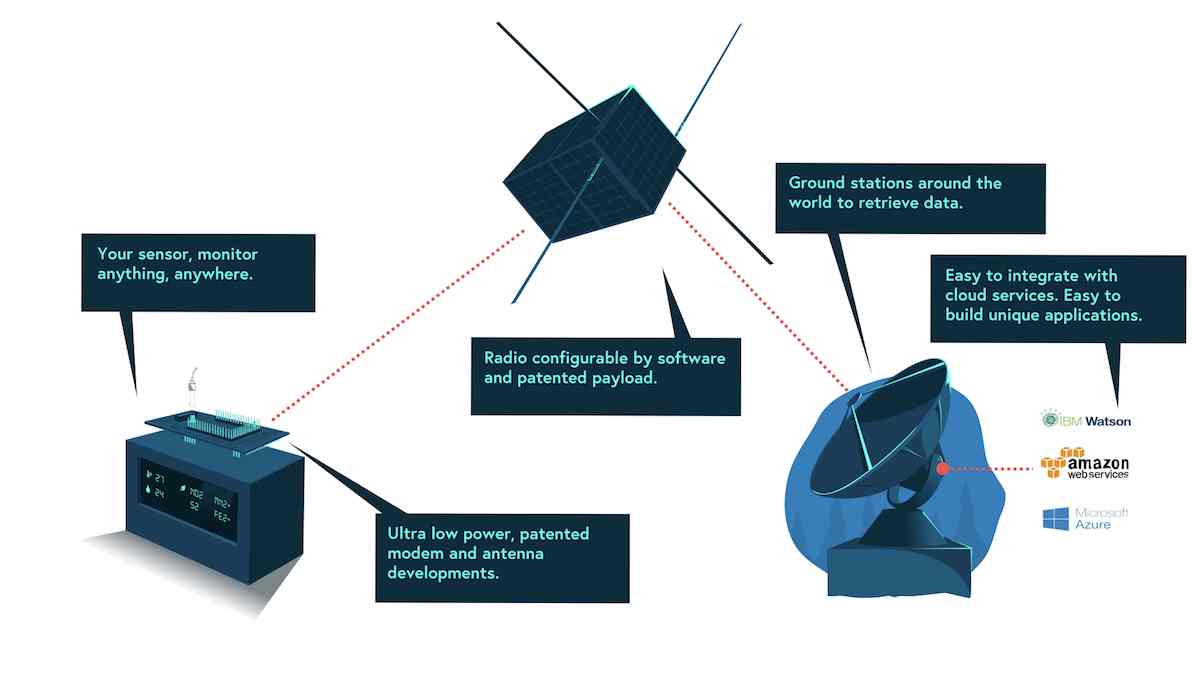› Forums › Startups › News (Startup) › NewSpace nano-satellite startup Hiber brings low power IoT connectivity
Tagged: ConnectivityTech_S8, IoTNetwork_H5, UseCase_G14
- This topic has 1 voice and 0 replies.
-
AuthorPosts
-
-
March 25, 2019 at 12:35 pm #29538
#News(Startup) [ via IoTForIndiaGroup ]
Hiber’s IoT-connectivity network, called Hiberband, will be operational from Q1 2019. Hiberband is the first Low Power Global Area Network (LPGAN), offered by Hiber. Hiberband delivers global connectivity for sensor and Internet of Things (IoT) related devices at affordable cost, by launching its own satellite network. This makes our service the first truly global IoT network.
 Hiberband works as follows:
Hiberband works as follows:
1. The modem receives data from the sensor;
2. The modem is in sleep mode (hibernation) until a satellite passes over;
3. The modem wakes up, communicates and transmits the data to our satellite;
4. The satellite stores all collected data;
5. Once in view of a gateway, the data is forwarded back to Earth;
6. From here, the messages are processed and stored for pickup or forwarded to the systems of the owner.When in orbit, every Hiber nano-satellite will fly over the earth’s poles 16 times a day and each spot on the equator twice a day, being the first of its kind to provide the planet with truly global IoT-connectivity. Using a process that is up to 20 times cheaper than existing global solutions, it works by transferring data from modems and antennas owned by customers directly to the micro-satellites. Data packets are then sent back to earth via the two initial satellite gateways in Spitsbergen in Norway and Delft in the Netherlands.
What makes Hiberband low-power?
Due to the unique Hiber protocol, the Hiberband modem is in sleep mode most of the time. Based on satellite constellation information, each modem on the ground calculates its next wake up moment, and once awake will start listening for a satellite. The moment the satellite passes overhead it will send out a broadcast message and instruct each modem to send it’s data to the satellite. This makes the power consumption 5 to 15 times more efficient than existing direct-to-satellite networks and comparable to the power consumption of terrestrial LPWAN connectivity types like SigFox, Lora and NB IoT
-
-
AuthorPosts
- You must be logged in to reply to this topic.
